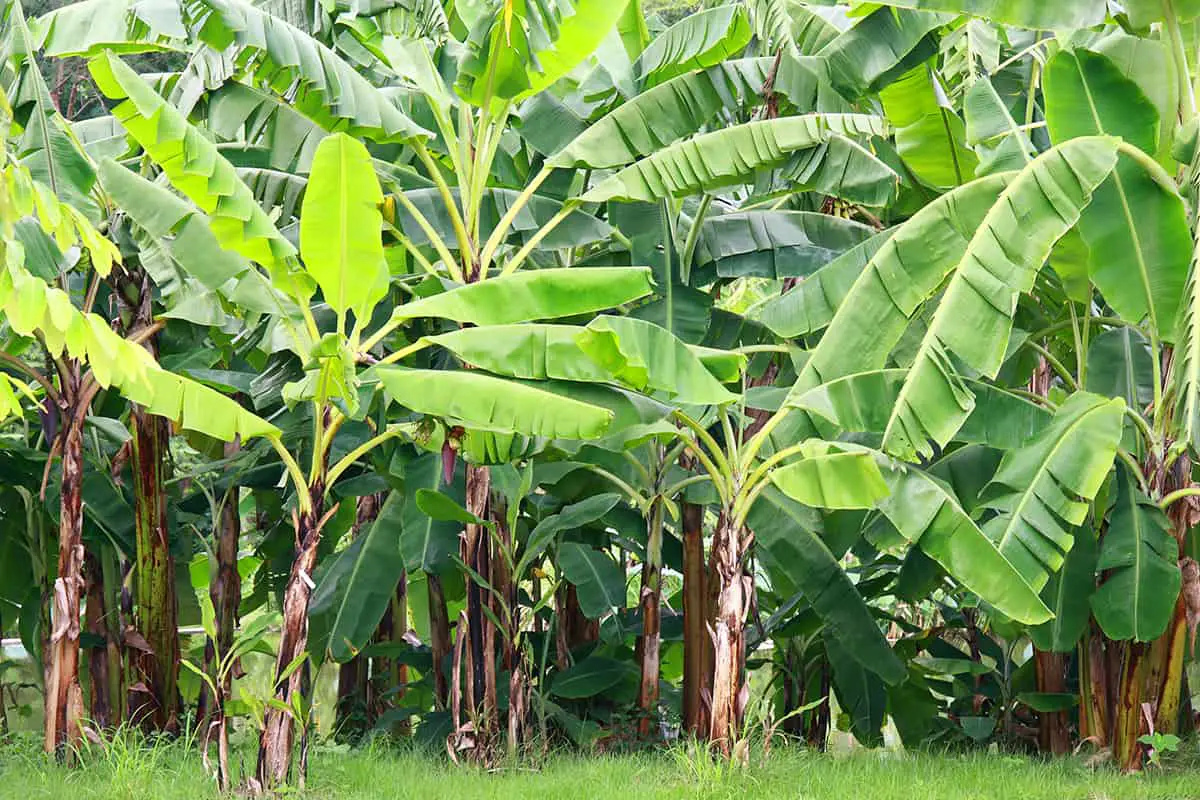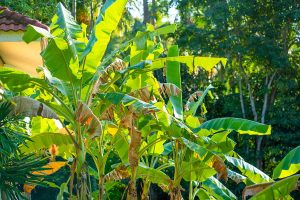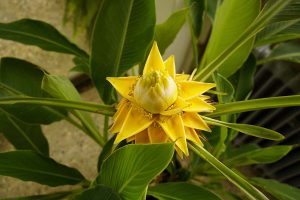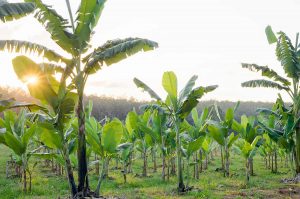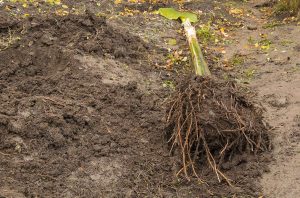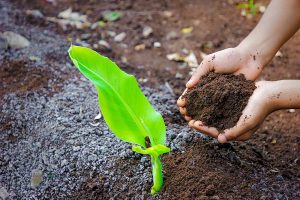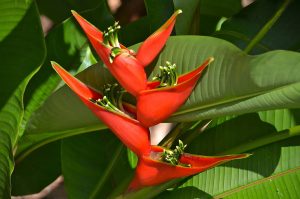Banana trees are popularly cultivated as landscape plants, houseplants, and also as fruit-producing plants. They are able to grow very quickly, but their rate of growth will depend on the growing conditions, as well as the variety of banana plants. Here we explore how fast banana trees grow.
Table of Contents
How Tall Do Banana Trees Grow?
Banana trees typically grow to minimum mature heights of 10 feet, though this will vary depending on the species, variety, and the growing conditions of the plant.
When grown in their natural habitat, banana plants will reach between 20 and 40 feet in ultimate height, but there are also dwarf varieties that will grow no taller than 6 feet. If you are keeping your banana plant in a container rather than directly in the ground, you can expect that this will not grow far beyond 10 feet.
Average Banana Tree Growth Rate
Banana plants grow exceptionally fast. They are able to reach their mature height in as little as 9 months, which for an 18-foot tree equates to a growth rate of an enormous 2 feet per month. In some cases, the tree will take longer to grow, for example, if the conditions are not ideal, but for banana trees that are grown outside, most will have reached their ultimate height by the time they are a year old.
Depending on the variety of the banana plant, this could mean a growth rate of anywhere from 6 inches per month, to a staggering 4 feet per month. This makes the average growth rate in the region of 2 feet per month.
What Size Do Bananas Produce Fruit?
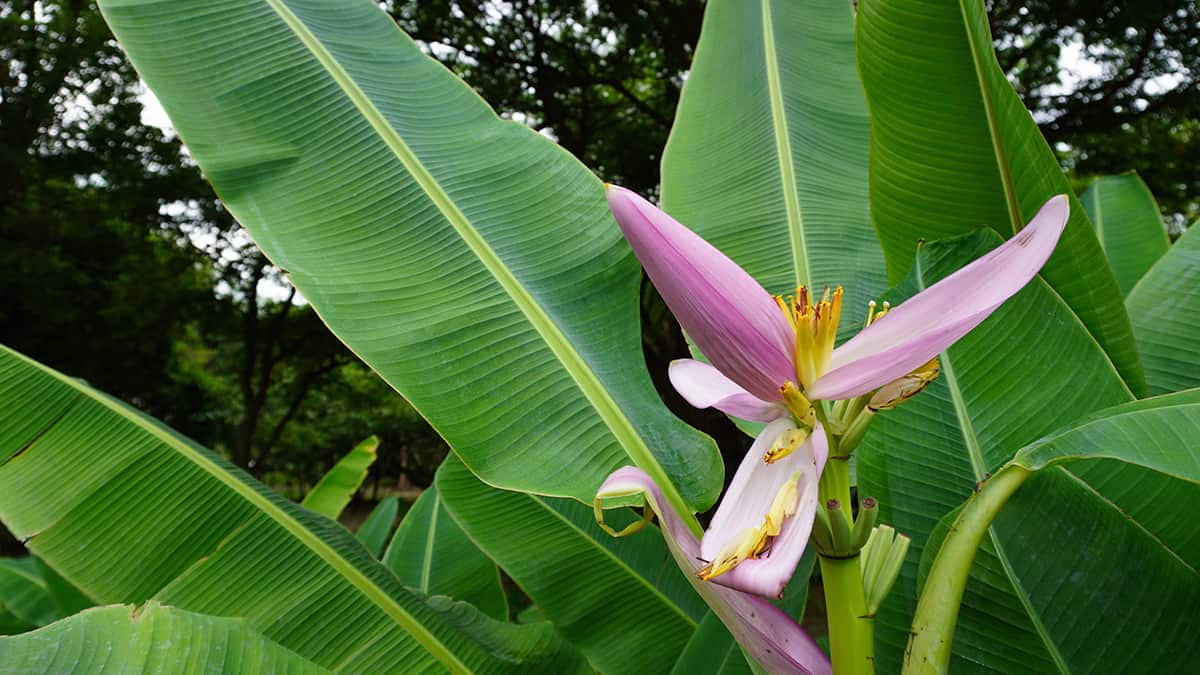
Banana trees will only survive long enough to produce one harvest of fruit. After they have fruited, the banana plant will die back, and new banana trees will grow from the rhizomes beneath the ground. If you are waiting for your banana to produce fruit, you shouldn’t be waiting for too long, providing the conditions are optimum. Banana trees will typically produce fruit at around 1 year of age, but this can sometimes take as long as 18 months.
The size of the banana tree when it produces fruit will depend on the variety of banana trees you are growing. After the crown of leaves is produced by the plant, the next thing that will happen is that the diameter of the trunk will begin to noticeably thicken. This is an indicator that the flowers are soon going to emerge.
An array of small flowers will then appear at the top of the trunk, and these can remain in bloom for up to 3 months before they give way to the fruit. The process of setting the fruit can then take a further 3 months.
When Can Banana Trees be Harvested?
Banana trees will usually be ready to harvest in late spring or early summer, around 4 weeks after the bananas have ceased to increase in size any further. The best time to remove the fruits from the tree is when the bananas are still green, and these will continue to ripen once they are no longer attached to the tree.
However, if you are growing the fruits for your own use at home, you do not need to perform a mass harvest, and instead can remove the fruits at different times to suit you, so that you have a longer season of fresh fruits to eat.
How Fast do Indoor Banana Trees Grow?
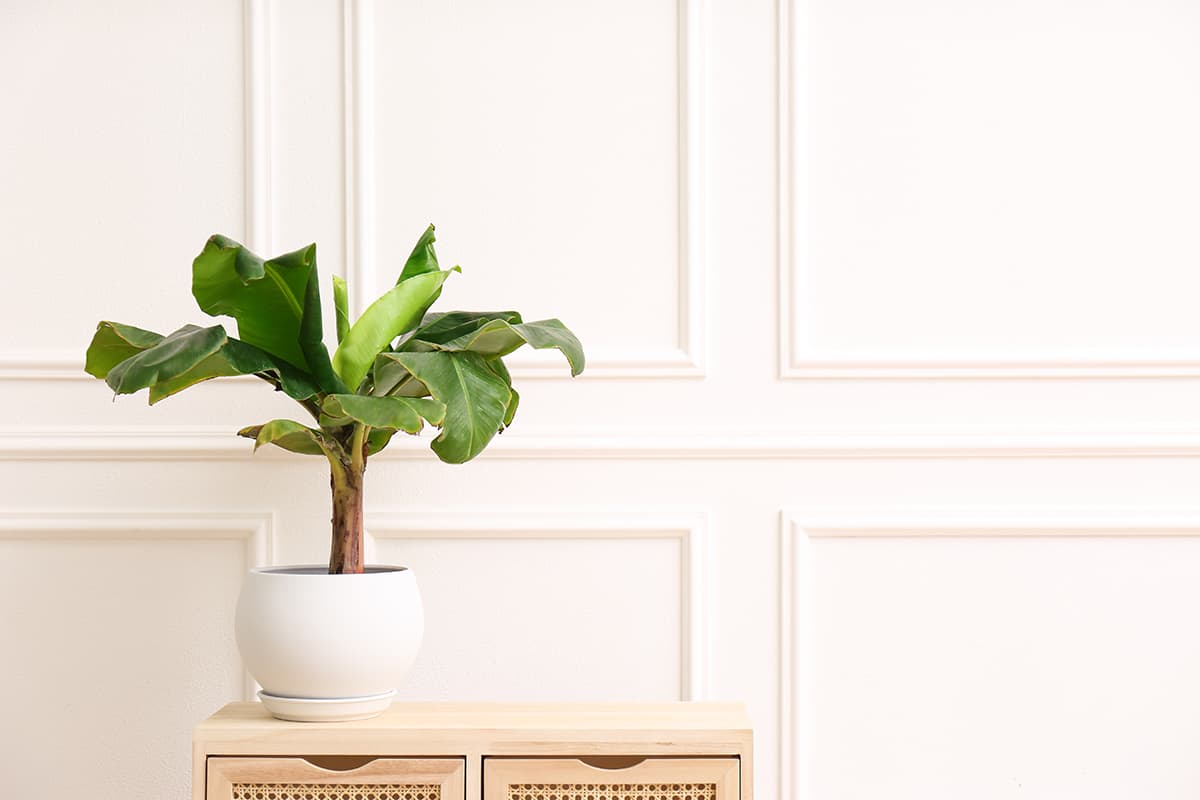
Banana trees that are kept indoors will grow considerably more slowly than those which are kept outdoors. This is for a number of reasons which boil down to the fact that indoor conditions are not ideal for the plant. The banana plant is a tropical species, which requires high levels of sun, warm temperatures, consistently moist soil, frequent fertilizer feeds, and high humidity.
These are plants that can be grown indoors successfully with the right level of care, but the indoor environment added to the fact that the plant will be grown in a pot will mean that the growth will be slower, and the ultimate height of the plant will be less than those grown outdoors.
That being said, banana trees can still grow faster than many other types of houseplants when grown indoors, and a growth rate of 4 feet per year is not unusual.
How to Make a Banana Tree Grow Faster
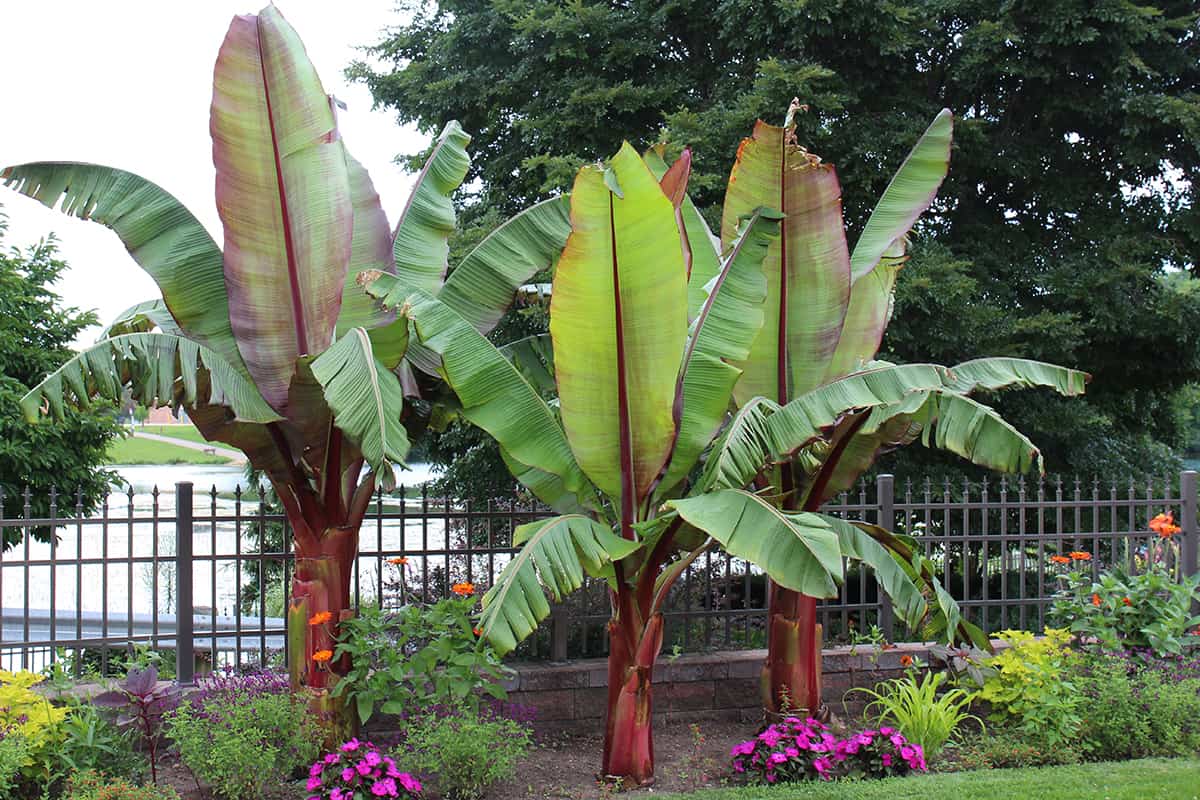
Banana trees thrive in tropical conditions, so in order to make a banana tree grow faster, these types of conditions will need to be replicated. This includes:
Light
Banana plants thrive in full light, so when kept outdoors they should be planted away from the shade of taller trees or nearby buildings and structures. Indoors, a room with a south-facing window would be best. Banana plants growing outside should get between 6 and 8 hours of direct light each day, whereas those growing indoors will fare best with even more light, in excess of 8 hours each day.
A position directly in front of a window will work well for a banana tree houseplant, or set back from the window in a south-facing room. If a banana tree does not get enough light, one of the main issues you will encounter is stunted growth. To encourage faster growth, position your banana plant in the brightest spot available.
Humidity
The tropical rainforest is the natural habitat for banana plants, and this is a very humid environment. Banana plants need consistently high levels of humidity to thrive, so when grown indoors you will need to put measures in place to increase the moisture levels in the air. There are several ways you can do this, for example regularly spritzing the leaves of the plant with a water misting spray, or plugging in an electric humidifier in the same room as the plant.
A pebble tray can also work well, which involves setting the plant pot on a tray of pebbles that are covered with water. As the water evaporates from the pebbles it will increase the moisture content of the air around the plant; just remember to keep the water topped up.
Alternatively, if you have a large, well-lit bathroom with plenty of natural light then this will be the ideal spot for a banana plant. The humidity in bathrooms is higher than in other rooms in the home due to the frequent use of the shower and bathtub, but unfortunately, most home bathrooms are not big enough or bright enough to accommodate banana plants. High humidity levels will help the banana plant remain healthy and ensure fast growth.
Water
Banana plants should be grown in soils that are fertile, well-draining, and consistently moist. They can be heavy drinkers, so you will need to keep on top of watering the plant so that it will get enough moisture to sustain its growth.
Fertilizer
Banana trees are heavy feeders. They need frequent applications of balanced fertilizer to thrive, and this will enable them to grow more quickly. Nitrogen in particular is responsible for the growth rate of the plant, so be sure to use a fertilizer high in nitrogen if your banana tree is exhibiting stunted growth.
